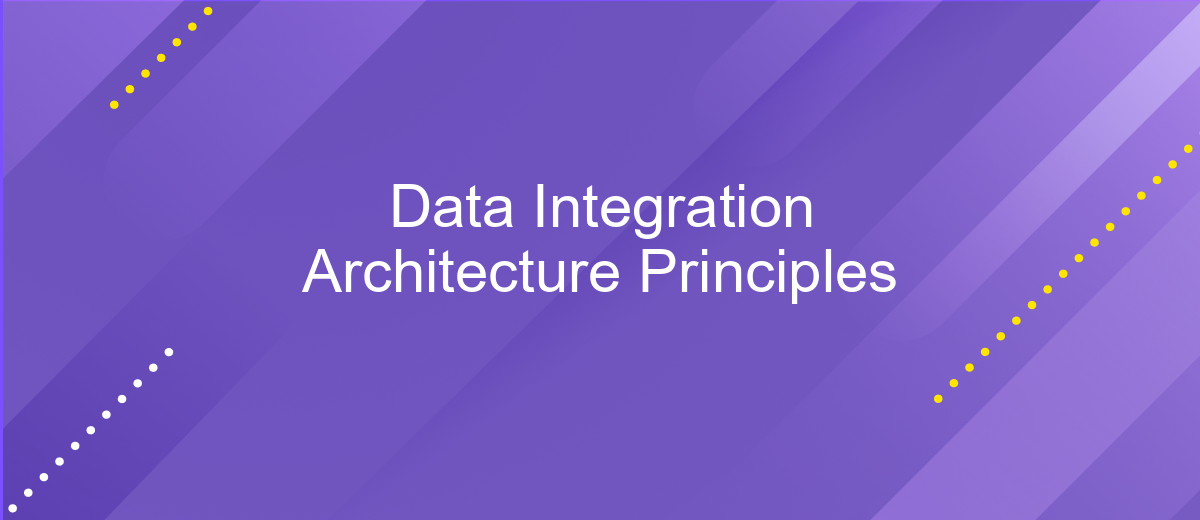Data Integration Architecture Principles
Data integration architecture is a critical component in modern IT ecosystems, enabling seamless data flow between disparate systems. This article delves into the key principles that underpin effective data integration architecture, focusing on scalability, flexibility, and data quality. By adhering to these principles, organizations can ensure robust, efficient, and reliable data integration, ultimately driving better decision-making and operational efficiency.
Introduction
Data integration architecture is a pivotal component in modern data management strategies, enabling organizations to unify disparate data sources into a cohesive, accessible, and actionable format. As businesses increasingly rely on data-driven decisions, the need for an efficient and robust data integration framework becomes paramount. This architecture ensures that data from various systems, whether on-premises or in the cloud, can be seamlessly combined and utilized for analytics, reporting, and operational purposes.
- Ensures data consistency and quality across systems
- Facilitates real-time data access and updates
- Supports scalability to handle growing data volumes
- Enhances data security and compliance
- Enables seamless integration of new data sources
Understanding the principles of data integration architecture is essential for IT professionals, data engineers, and business analysts. By adhering to these principles, organizations can create a flexible and scalable data infrastructure that not only meets current needs but also adapts to future technological advancements and business requirements. This foundational knowledge is crucial for driving innovation and maintaining a competitive edge in the data-centric landscape.
Data Integration Architecture Principles

Data integration architecture is foundational for ensuring seamless data flow across disparate systems. One of the key principles is interoperability, which emphasizes the need for different systems to work together efficiently. This involves standardizing data formats and protocols to facilitate smooth data exchange. Scalability is another crucial principle, ensuring that the architecture can handle increasing data volumes and complexity over time without compromising performance.
Security and compliance are also paramount, requiring robust measures to protect sensitive data and adhere to regulatory standards. Tools like ApiX-Drive can be instrumental in this process, offering automated data integration solutions that simplify the setup and management of data flows between various applications. By leveraging such services, organizations can achieve more efficient and secure data integration, ultimately enhancing their overall data strategy and operational effectiveness.
Integration Patterns and Best Practices

Effective data integration is crucial for ensuring seamless data flow and consistency across diverse systems. Integrating disparate data sources involves adopting specific patterns and best practices to achieve optimal results.
- ETL (Extract, Transform, Load): A traditional method where data is extracted from source systems, transformed into a suitable format, and loaded into a target system.
- ELT (Extract, Load, Transform): Similar to ETL, but transformation happens after loading data into the target system, leveraging the target system's processing power.
- Data Virtualization: Provides a unified data access layer without physically moving data, enabling real-time integration and reducing data redundancy.
- API Integration: Utilizes APIs to connect and exchange data between systems, promoting real-time data sharing and interoperability.
- Event-Driven Architecture: Employs events to trigger data integration processes, ensuring timely and responsive data updates across systems.
Adhering to these patterns and best practices can significantly enhance the efficiency and reliability of data integration efforts. Selecting the appropriate approach depends on the specific requirements and constraints of the integration scenario, ensuring a tailored and effective solution.
Data Integration Architecture Implementation

Implementing a robust data integration architecture requires careful planning and execution. The process begins with a thorough assessment of existing data sources, systems, and workflows. This assessment helps in identifying the key data elements that need to be integrated and the potential challenges that may arise during the integration process.
Once the assessment is complete, the next step involves selecting the appropriate tools and technologies. These tools should be capable of handling the volume, variety, and velocity of data that will be integrated. Additionally, they should support real-time data processing and ensure data quality and consistency.
- Define integration requirements and objectives.
- Choose suitable data integration tools and platforms.
- Develop data mapping and transformation rules.
- Implement data governance and security measures.
- Test and validate the integration process.
After the implementation phase, continuous monitoring and optimization are essential. Regular audits and performance evaluations ensure that the data integration architecture remains efficient and scalable. By adhering to these principles, organizations can achieve seamless data integration and drive better decision-making.
- Automate the work of an online store or landing
- Empower through integration
- Don't spend money on programmers and integrators
- Save time by automating routine tasks
Case Studies and Examples
One prominent example of successful data integration architecture is seen in the retail industry. A large retail chain implemented a robust data integration solution to unify data from its online store, physical outlets, and supply chain systems. By leveraging advanced ETL (Extract, Transform, Load) tools, they managed to create a centralized data repository. This integration enabled real-time inventory management, personalized customer experiences, and efficient supply chain operations, significantly boosting their overall operational efficiency.
Another notable case is a healthcare organization that utilized ApiX-Drive to streamline its data integration processes. The organization faced challenges in integrating patient records, billing information, and lab results from various systems. By deploying ApiX-Drive, they automated the data integration workflow, ensuring seamless data exchange between disparate systems. This not only reduced manual data entry errors but also improved patient care by providing healthcare professionals with timely and accurate information. The success of this integration highlights the importance of leveraging specialized services like ApiX-Drive in achieving efficient and reliable data integration.
FAQ
What is Data Integration Architecture?
Why is Data Integration important?
What are the key principles of Data Integration Architecture?
How can I automate data integration processes?
What challenges might I face with Data Integration?
Do you want to achieve your goals in business, career and life faster and better? Do it with ApiX-Drive – a tool that will remove a significant part of the routine from workflows and free up additional time to achieve your goals. Test the capabilities of Apix-Drive for free – see for yourself the effectiveness of the tool.


